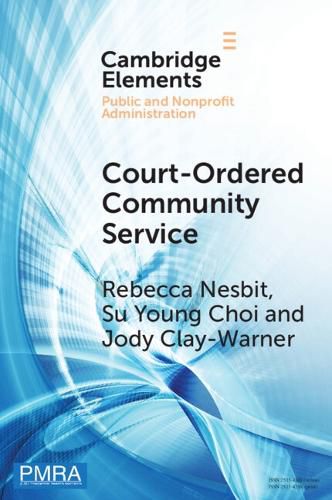Readings Newsletter
Become a Readings Member to make your shopping experience even easier.
Sign in or sign up for free!
You’re not far away from qualifying for FREE standard shipping within Australia
You’ve qualified for FREE standard shipping within Australia
The cart is loading…






Community service is a common court-ordered sanction in many countries. Individuals sentenced to community service must work a specified number of uncompensated hours at an approved community agency, typically as a condition of probation. A core expectation of court-ordered community service is that the community agencies benefit from this labor. However, very little research examines the organizational and interpersonal dynamics involved when community organizations work with court-ordered community service workers. What are local public and nonprofit organizations' experiences with court-ordered community service workers? How do the workers, themselves, experience court-ordered community service within community agencies? This Element addresses these questions through interviews with thirty-one volunteer managers and thirty-four court-ordered community service workers in two court jurisdictions in northeast Georgia. The Element frames its findings within the volunteer management literature and suggests practices that could improve experiences for both the court-ordered community service worker and the community organization. This title is also available as open access on Cambridge Core.
$9.00 standard shipping within Australia
FREE standard shipping within Australia for orders over $100.00
Express & International shipping calculated at checkout
Community service is a common court-ordered sanction in many countries. Individuals sentenced to community service must work a specified number of uncompensated hours at an approved community agency, typically as a condition of probation. A core expectation of court-ordered community service is that the community agencies benefit from this labor. However, very little research examines the organizational and interpersonal dynamics involved when community organizations work with court-ordered community service workers. What are local public and nonprofit organizations' experiences with court-ordered community service workers? How do the workers, themselves, experience court-ordered community service within community agencies? This Element addresses these questions through interviews with thirty-one volunteer managers and thirty-four court-ordered community service workers in two court jurisdictions in northeast Georgia. The Element frames its findings within the volunteer management literature and suggests practices that could improve experiences for both the court-ordered community service worker and the community organization. This title is also available as open access on Cambridge Core.